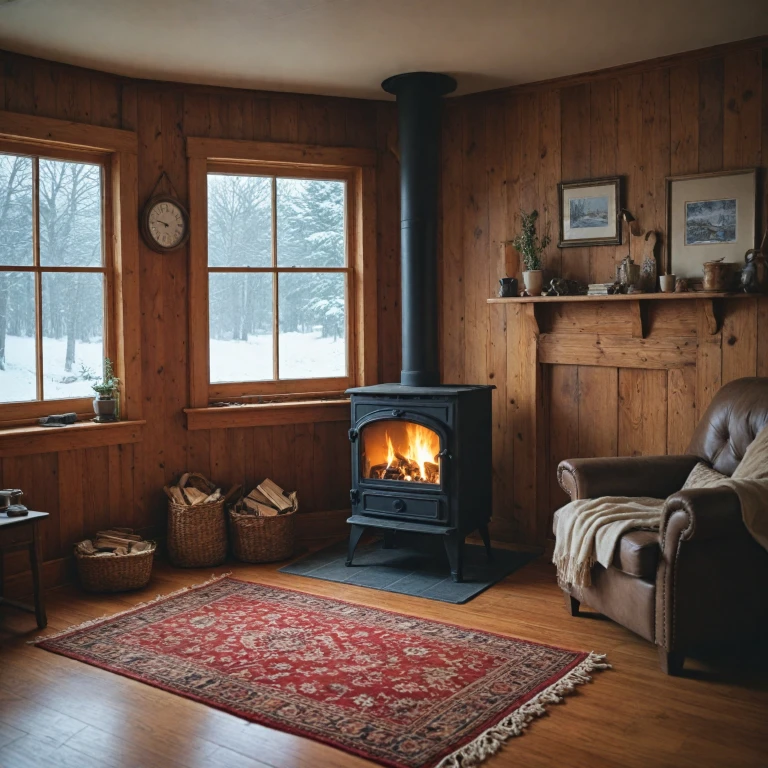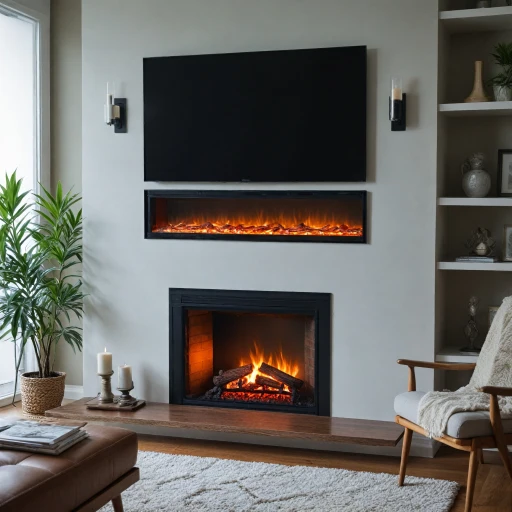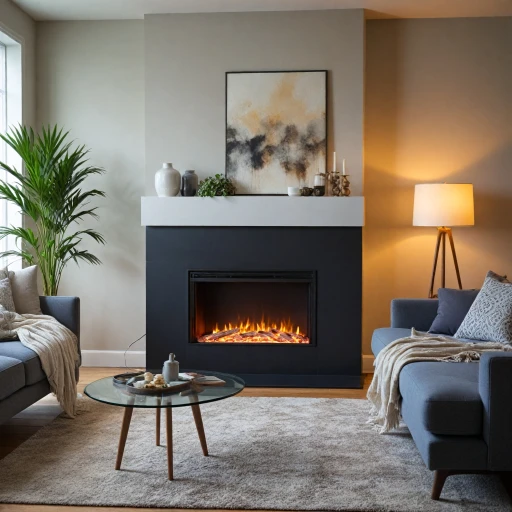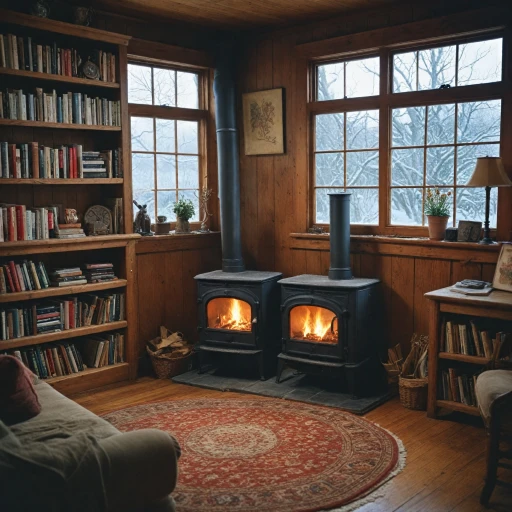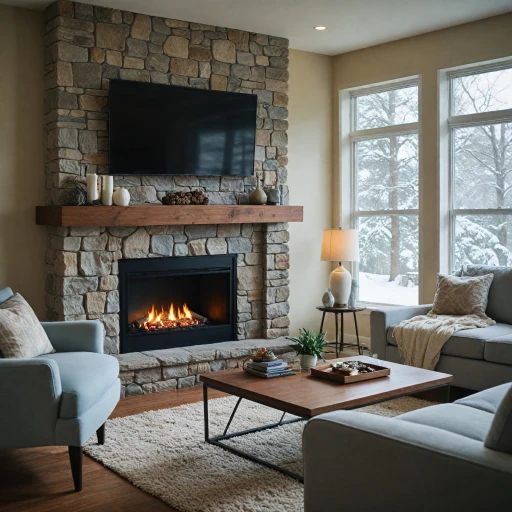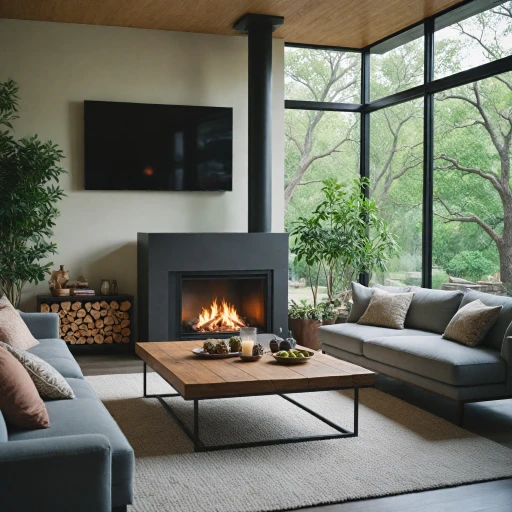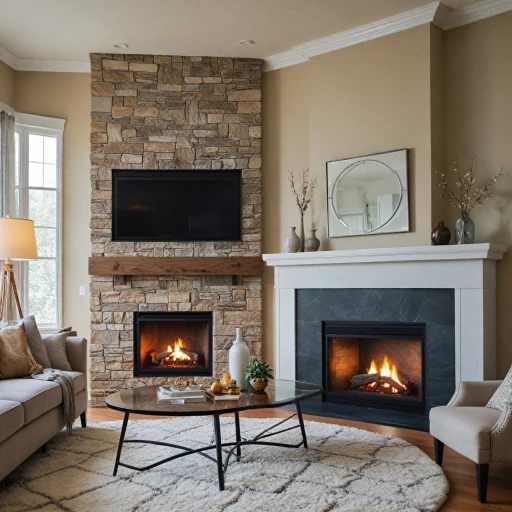
Understanding the Role of a Wood Stove Blower
The Essential Function of a Stove Blower
A wood stove blower, as the name suggests, plays an influential role in enhancing the functionality of your stove or fireplace by circulating warm air throughout the room. This device is crucial for maximizing the effective heating one can achieve with a wood stove, especially during the colder months.
At its core, a stove blower uses a fan to spread the heat that naturally emanates from your stove, ensuring no inch of your living space is left out in the cold. By optimizing the redistribution of warm air, a blower ensures that the heat doesn't just rise to the ceiling, but is pushed down and around the room, providing consistent comfort.
Whether it's a wood burning or a gas stove, the blower fan is designed to work efficiently with different types of fuel, including wood, pellet, and gas. Most blowers come as part of a kit that includes the necessary parts for setup, like the blower motor and fan kit. Some models even offer a variable speed feature, allowing users to adjust the blower to their preferred setting for customized warmth distribution.
Those investing in a new wood stove or looking for a replacement blower will find a variety of options available, often with the perk of free shipping, to suit their heating needs. Checking out the MSRP and add-to-cart options online can simplify the purchase process, ensuring your home remains cozy and inviting without the hassles of traditional heating methods.
Benefits of Using a Wood Stove Blower
The Perks of a Wood Stove Blower Unpacked
When the temperature drops, we're all hunting for that perfect solution to keep our living spaces warm and cozy. That's where a wood stove blower steps in, with plenty of reasons to consider adding it to your heating setup.- Enhanced Heating Efficiency: A wood stove blower does wonders by efficiently circulating warm air throughout your room. Think of it as a turbo boost for your stove's heating power. No more chilly corners in your space, just comforting warmth touching every nook and cranny.
- Cost Savings: By distributing heat more evenly, you could save a few bucks on your heating bills. Your stove uses less firewood or pellets, making it a win-win for your wallet and the environment!
- Comfort at Its Best: No one enjoys feeling like a popsicle in their own home. A blower ensures a uniform heat, eliminating pesky spots with little to no warmth. Now, you can walk from room to room with consistent, toasty comfort.
- Quiet Yet Powerful: Modern blowers are designed to work quietly without sacrificing strength. You can enjoy your favorite movie or settle into a good book without annoying background noise.
- Adaptability and Flexibility: With variable speed settings, you can adjust the blower to suit your preferences. Whether you need a gentle breeze of warmth or a powerful whoosh of heat, it's all at your fingertips.
Installation Considerations for Wood Stove Blowers
Preparing for a Wood Stove Blower Installation: What to Consider
Considering the installation of a wood stove blower can be a game-changer for your home's heating system. But, where do you begin? Here are some key things to ponder before starting the process:- Know Your Wood Stove Model: Before you embark on buying a blower fan, check whether your wood burning stove is compatible with one. Each model has unique specifications, and it's crucial that the blower kit matches these.
- Room Layout and Size: Have a clear understanding of the room's dimensions. The right blower will efficiently circulate warm air throughout the space, optimizing heat distribution. If you want the fire to warm a particularly large area, you'll need a kit that's designed to pump out enough forceful air to make a difference.
- Electrical Requirements: Ensure you have the necessary electrical setup to support a blower motor. This might involve reevaluating your current wiring or even adding a dedicated circuit for the blower fan.
- Combining with Other Heat Sources: If you have a convection blower or any other auxiliary heating solutions, consider how they will work alongside the stove blower. For instance, combining with a gas fireplace may impact overall heat efficiency due to varying air flow dynamics.
- Installation Costs and Additional Parts: The cost isn't only about the blower's MSRP. Factor in shipping, or even free shipping offers, and the potential need for replacement parts down the line. A custom firescreen or variable speed controls might incur additional charges. Check if the blower kit's fan motor is included, or if you'll need to add it to your cart separately.
- Professional Help vs. DIY: Installing a blower isn’t always a simple swap. While some people might feel comfortable with a DIY approach, consider hiring a professional if the installation seems complex. Getting a replacement blower is much simpler than fixing a poorly installed one.
Comparing Wood Stove Blowers and Electric Fireplaces
A Match-Up: Wood Stove Blowers Versus Electric Fireplaces
Deciding between a wood stove blower and an electric fireplace heater can feel like choosing between good old fashioned warmth and modern convenience. Both options have their merits, so let's see how they stack up against each other.- Heat Output:
- Installation Flexibility:
- Energy Efficiency & Cost:
- Aesthetic Appeal:
- Maintenance Requirements:
Maintenance Tips for Optimal Performance
Keeping Your Blower in Top Shape
Maintaining a wood stove blower is key to ensuring that it runs at optimal performance, providing you with that cozy warmth when the temperatures drop. Here’s what you should consider to keep your blower humming.- Regular Cleaning: Dust and debris can accumulate in your blower fan, potentially causing it to work harder than it needs to. A light brush and a vacuum can do wonders for cleaning out any blockages that might be affecting airflow. Keeping the air pathway clear ensures the fan motor isn’t overworking.
- Inspecting Parts: Regularly inspect for wear and tear. Parts like the blower motor or replacement blower fans can fail over time. Staying ahead of any needed replacements can prevent you from being left in the cold.
- Lubrication: Some older models or specific brands might require occasional lubrication to keep moving parts operating smoothly. Check your manual for any lubrication needs, as this can extend the life of the fan motor.
- Checking Electrical Connections: Often overlooked, but incredibly important! Loose wires or corroded connections can lead to inefficient performance or even failure. A quick inspection every few months helps avoid those headaches.
- Listening to Your Blower: Pay attention to any strange noises that might indicate parts wearing out or becoming misaligned. Catching these early can save on bigger repairs later.
Choosing the Right Wood Stove Blower for Your Home
Identifying the Ideal Blower for Maximum Heat and Comfort
Choosing the right wood stove blower involves more than just matching it with your stove model and budget. While a blower's key role is to enhance the distribution of warm air throughout the room, there are various elements to consider to ensure you're getting an effective, long-lasting component.- Compatibility with your Stove: Make sure that the blower fits perfectly with your wood stove or pellet stove. Check the manufacturer's specifications for compatible blowers to avoid any mismatch or additional costs for adjustments.
- Blower Type: Decide whether a variable speed blower or a basic model is more suitable for your needs. A fan with variable speed settings offers customizable airflow, allowing for better control over the heat output and room temperature.
- Blower Kit versus Replacement Blower: If you don’t have a blower installed initially, opting for a blower kit that includes all necessary parts can provide convenience and efficiency. However, if you're simply replacing an old blower, identify the specific model needed for easy installation and uninterrupted heating performance.
- Consider the Noise Level: Some blowers can be quite noisy. If you prefer a quieter ambiance while enjoying the warmth, look for brands or models that emphasize quiet operation. Reading customer reviews can often shed light on the real-world experiences of other users with noise levels.
- Warranty and Support: Verify if the blower comes with a warranty or free shipping for replacement parts in case of defects or issues. Good customer support from the manufacturer can save time and effort in resolving potential problems.
- Pricing and Availability: Prices can vary widely with various brand offerings, so compare the MSRP, add cart prices, and availability of free shipping offers that fit your budget and preferences. The value you receive should align with the cost, ensuring a worthwhile investment.
- Safety Features and Energy Efficiency: Check for safety certifications and energy efficiency ratings. An energy-efficient blower will save on electricity costs over time while providing effective heat distribution.
